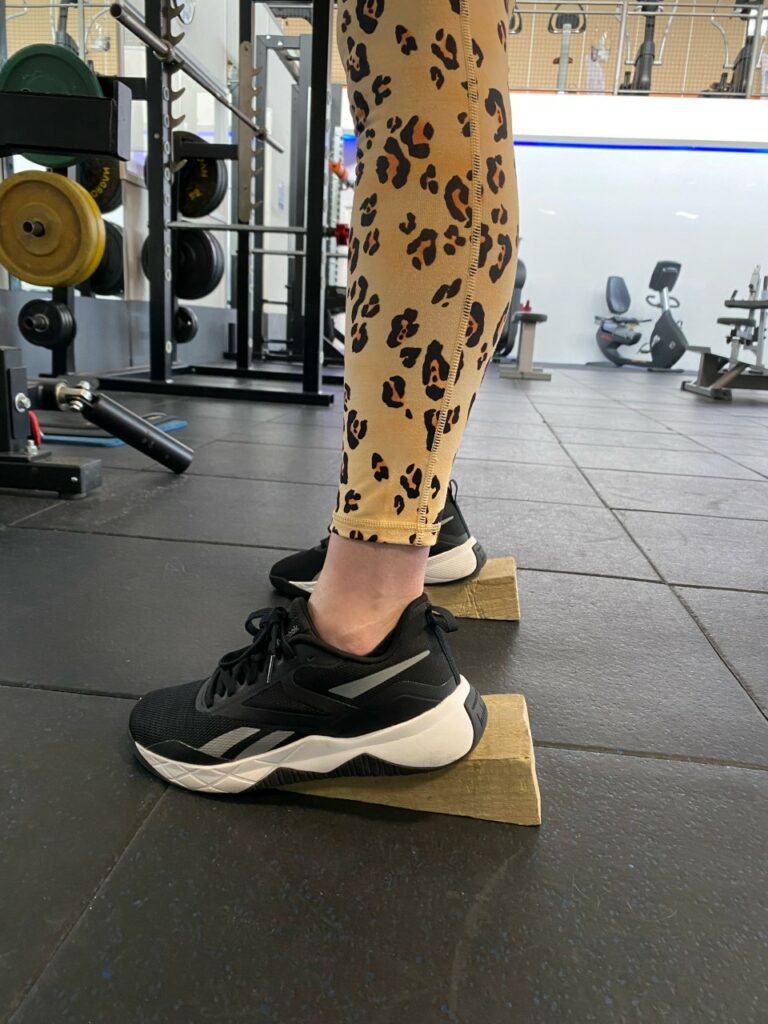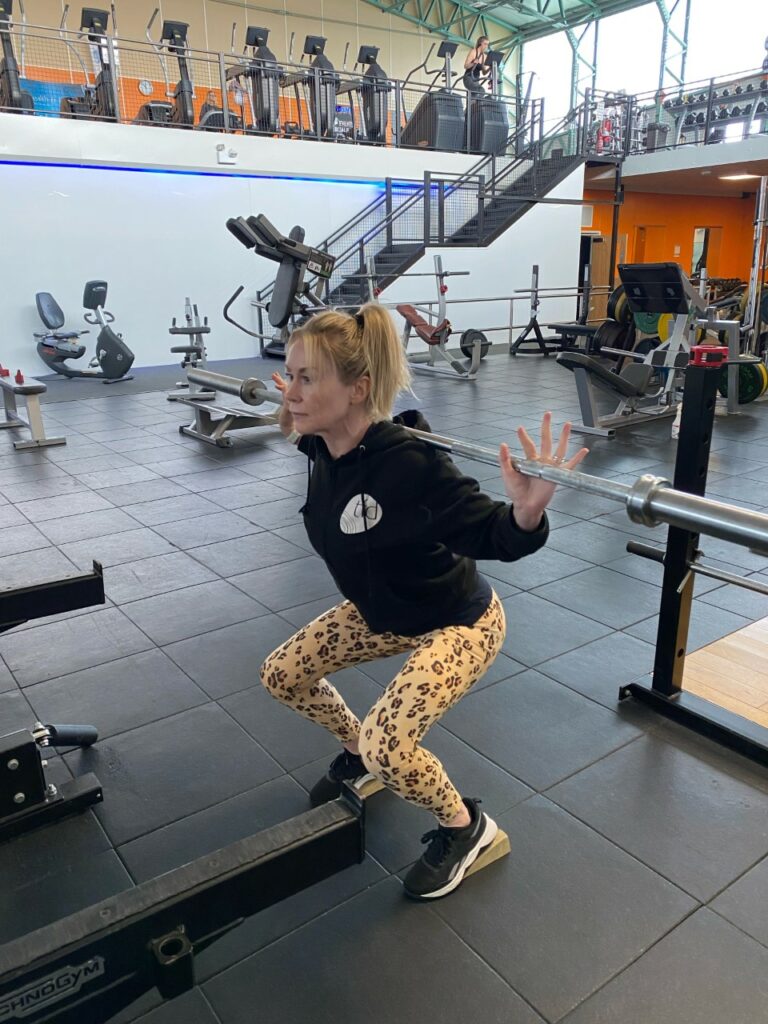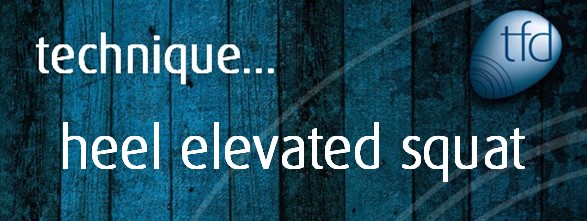What is a heel elevated squat?
As the name suggests, it is a squat with the heels raised on wedges or another solid stable platform. This changes the angle of resistance and mechanics compared to a regular squat to allow for greater range of movement and depth.

How to perform a heel elevated squat
Arrange the wedges or small plate weights in the correct position for your feet, generally hip width distance apart. You may choose to use a barbell, dumbbells, kettlebells or just body weight. As with a regular squat, if you are using a barbell take the barbell off the rack and place behind the head across the shoulders. Brace your core and keeping the chest up, push your hips back and bend knees until thighs are parallel to the floor, or lower if you can! Take a slight pause and press into the heels to drive up and return to a standing position.
If you are using dumbbells or kettlebells, you can have these in each hand down by the side of you or held out to the front with your arms extended. Just using body weight is a good way to get a feel for the exercise before progressing to using weights.

Benefits of heel elevated vs regular squat
By elevating the heels, you will create artificial mobility in the ankle meaning you will have greater depth in the squat, achieving a full range of motion and potential to lift heavier weight. The same muscles are used in both heel elevated and regular squat. So while you will still be working quads, glutes, calves and lower back the emphasis is more on the quads rather than the posterior muscles. The hamstrings along with both your adductors and abductors will take on an important stabilising role. A heel elevated squat can also put less strain on the lower back.

Things to consider
As with regular squats, the position of the feet is ideally hip width apart and you don’t want the knees to turn inwards or outwards as you lower into your squat. Heel elevated squats, although putting less pressure on lower back can have more pressure on the knees so if you have knee problems this may not be the exercise for you.
If these are for you….. give them a try or ask a member of the team for some assistance!

